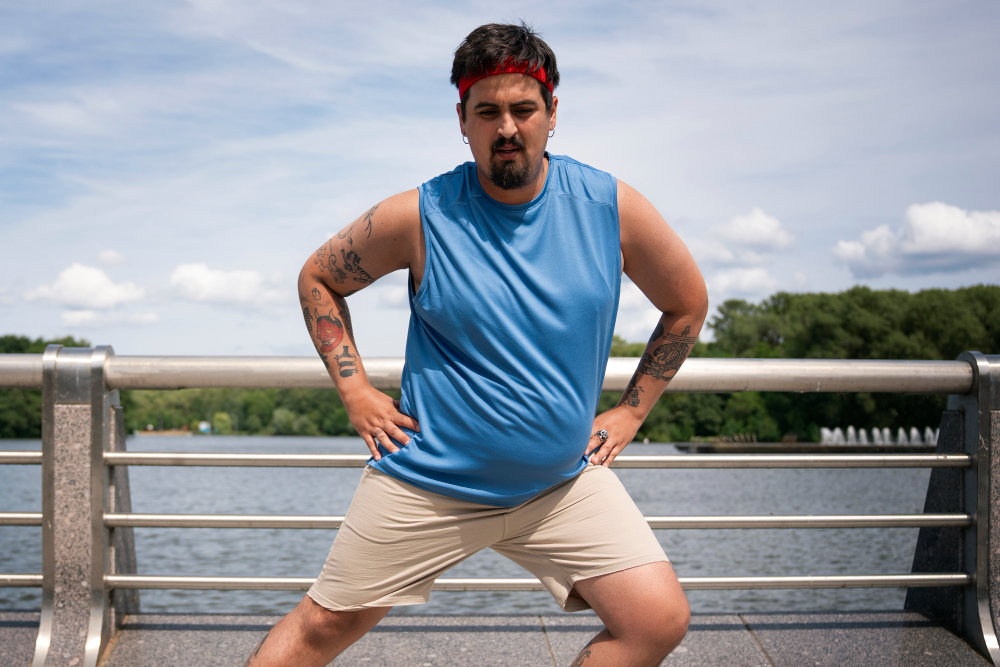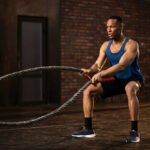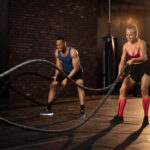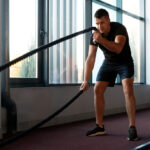You don’t need to lose weight before you start strength training. That’s backward thinking. You don’t “earn” the right to train by dropping pounds. You train to feel better, move better, and get stronger… At any size.
Too many obese beginners get stuck in the cycle of endless cardio, fad diets, and waiting to be “ready.” Meanwhile, their strength, energy, and confidence stay on the back burner.
This blog post is here to flip that script. We’re not sugarcoating anything. Strength training for obese beginners can be intimidating at first. Gyms are full of mirrors, egos, and bad advice. But it’s also one of the most powerful tools you have to change your body and your mindset. You just need the right plan, a safe approach, and a little patience.
The Case for Strength Training When You’re Obese
Muscle is metabolically active. That means the more muscle you build, the more calories your body burns even when you’re doing absolutely nothing. This can be a great addition to your weight loss journey.
Now let’s take into consideration a real-life example. Carrying extra weight puts more pressure on your joints. Strength training builds the muscle that helps support those joints. That means less knee pain, better balance, and more confidence walking up stairs or standing for longer periods.
What “Safe” Really Means (And Doesn’t)
“Safe” doesn’t mean “easy.” It doesn’t mean avoiding sweat, avoiding effort, or sticking to machines forever. Safe means smart. It means knowing where your body is today and training it in a way that moves the needle without snapping the cable.
If you’re obese, your joints, ligaments, and cardiovascular system are already under pressure. That doesn’t mean you’re fragile — it means you need to respect the process. Starting with poor form, rushing through reps, or trying to match what a 200-pound trainer is doing? That’s not safe. That’s ego. Leave that at the door.
Here’s what real safety looks like:
- Good form over heavy weight. Always.
- Controlled movement over speed.
- Pain = stop. Soreness = normal.
How to Set Up Your Training
You don’t need a 7-day split, a personal trainer, or a gym membership to start. What you do need is a clear, simple plan you can stick to.
Frequency:
Start with 2-3 full-body sessions per week. That’s it. No need to train every day. In fact, your body needs recovery time between sessions to adapt and grow stronger.
Focus:
Forget isolation exercises. You don’t need tricep kickbacks right now. Focus on compound, functional movements that work multiple muscle groups at once: squats, pushes, pulls, hinges, and carries.
Structure:
Each session should follow a basic flow:
- Warm-up (5-10 min): joint mobility, light cardio, band work.
- Main lifts: 2-3 compound movements. Start with bodyweight or resistance bands.
- Accessory work: 1-2 exercises to support weak areas (like core or glutes).
- Cooldown: gentle stretching, breath work.
Progression:
Start where you are, not where you think you should be. Can’t do a full squat? Use a box. Can’t do a push-up? Start at the wall. Master the basics, then add resistance. Consistency builds capacity.
Looking for cardio options? Low-impact HIIT for obese beginners complements strength training without joint stress.
The Big Five Moves (Scaled for Big Bodies)
These are the foundations. They train real-life strength, hit multiple muscle groups, and translate directly into daily function.
1. Squat
- Start with: Box squats or TRX-assisted squats.
Why: Builds lower body strength, improves balance, and trains your body to get up and down safely. - Tip: Set the box height so it’s challenging but doable. Depth comes later.
2. Push
- Start with: Wall push-ups, incline push-ups (against a bench), or dumbbell chest press.
- Why: Strengthens chest, shoulders, and triceps — helps with pushing off the floor or out of a chair.
- Tip: Keep the core tight. Don’t let your lower back sag.
3. Pull
- Start with: Resistance band rows or machine-assisted rows.
- Why: Trains your back and biceps, balances out all that pushing, and improves posture.
- Tip: Think “elbows back,” not “hands to chest.”
4. Hinge
- Start with: Glute bridges or kettlebell Romanian deadlifts (light weight).
- Why: Strengthens your hips, hamstrings, and glutes — crucial for walking, bending, and back safety.
- Tip: Keep your spine neutral and move from the hips, not the lower back.
5. Carry
- Start with: Farmer’s walks using light dumbbells or kettlebells.
- Why: Builds grip strength, core stability, and total-body tension.
- Tip: Stand tall, walk slow, and breathe steady.
Mindset Matters More Than Motivation
Motivation is unreliable. It comes and goes. You can’t build a long-term habit on hype.
What you need is discipline — the ability to show up even when you don’t feel like it. That’s what changes your body. That’s what shifts your identity.
Start by ditching the “all or nothing” mindset. You don’t have to be perfect. You just have to be consistent. Missing a workout isn’t failure. Quitting for a month because you missed one? That’s the real damage.
Also: stop obsessing over the scale. Strength training might not drop your weight fast, but it will reshape your body, fire up your metabolism, and make you feel stronger. Those are the wins that matter.
Set performance goals instead:
- “Do 10 perfect bodyweight squats.”
- “Hold a 30-second plank.”
- “Add 5 pounds to my dumbbell press.”
Final Thoughts
You don’t need to wait to be thinner, fitter, or more “ready” to start lifting. You just need to start, safely, consistently, and with purpose.
Strength training isn’t about turning into a gym rat or chasing six-pack abs. It’s about reclaiming control of your body. It’s about building muscle that supports your joints, fuels fat loss, and makes daily life easier. It’s about proving to yourself that you’re stronger than you thought, session after session.





